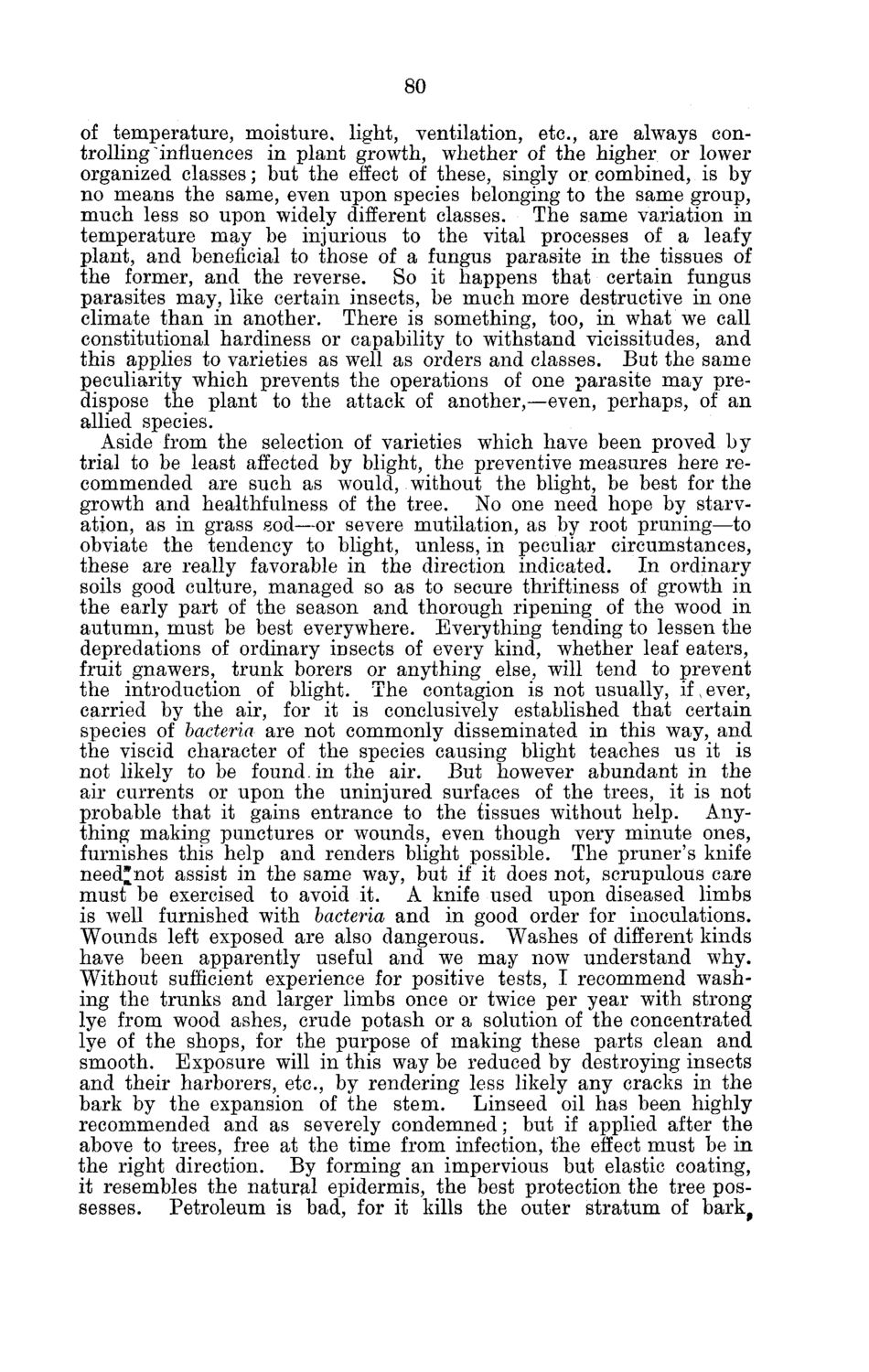| |
| |
Caption: Board of Trustees Minutes - 1880
This is a reduced-resolution page image for fast online browsing.

EXTRACTED TEXT FROM PAGE:
80 of temperature, moisture, light, ventilation, etc., are always controlling influences in plant growth, whether of the higher or lower organized classes; but the effect of these, singly or combined, is by no means the same, even upon species belonging to the same group, much less so upon widely different classes. The same variation in temperature may be injurious to the vital processes of a leafy plant, and beneficial to those of a fungus parasite in the tissues of the former, and the reverse. So it happens that certain fungus parasites may, like certain insects, be much more destructive in one climate than in another. There is something, too, in what we call constitutional hardiness or capability to withstand vicissitudes, and this applies to varieties as well as orders and classes. But the same peculiarity which prevents the operations of one parasite may predispose the plant to the attack of another,—even, perhaps, of an allied species. Aside from the selection of varieties which have been proved by trial to be least affected by blight, the preventive measures here recommended are such as would, without the blight, be best for the growth and healthfulness of the tree. No one need hope by starvation, as in grass sod—or severe mutilation, as by root pruning—to obviate the tendency to blight, unless, in peculiar circumstances, these are really favorable in the direction indicated. In ordinary soils good culture, managed so as to secure thriftiness of growth in the early part of the season and thorough ripening of the wood in autumn, must be best everywhere. Everything tending to lessen the depredations of ordinary insects of every kind, whether leaf eaters, fruit gnawers, trunk borers or anything else, will tend to prevent the introduction of blight. The contagion is not usually, if v ever, carried by the air, for it is conclusively established that certain species of bacteria are not commonly disseminated in this way, and the viscid character of the species causing blight teaches us it is not likely to be found, in the air. But however abundant in the air currents or upon the uninjured surfaces of the trees, it is not probable that it gains entrance to the tissues without help. Anything making punctures or wounds, even though very minute ones, furnishes this help and renders blight possible. The pruner's knife need*not assist in the same way, but if it does not, scrupulous care must be exercised to avoid it. A knife used upon diseased limbs is well furnished with bacteria and in good order for inoculations. Wounds left exposed are also dangerous. Washes of different kinds have been apparently useful and we may now understand why. Without sufficient experience for positive tests, I recommend washing the trunks and larger limbs once or twice per year with strong lye from wood ashes, crude potash or a solution of the concentrated lye of the shops, for the purpose of making these parts clean and smooth. Exposure will in this way be reduced by destroying insects and their harborers, etc., by rendering less likely any cracks in the bark by the expansion of the stem. Linseed oil has been highly recommended and as severely condemned; but if applied after the above to trees, free at the time from infection, the effect must be in the right direction. By forming an impervious but elastic coating, it resembles the natural epidermis, the best protection the tree possesses. Petroleum is bad, for it kills the outer stratum of bark,
| |